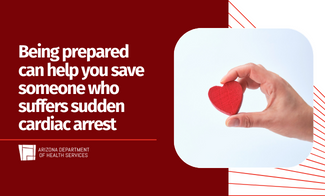 Americans were stunned when Buffalo Bills safety Damar Hamlin collapsed during a Monday Night Football game with sudden cardiac arrest. The actions taken to save his life illustrate the value of rapid treatment with high quality CPR and the use of an automated external defibrillator, or AED. Thankfully, Hamlin has been released from the hospital and continues to recover.
Americans were stunned when Buffalo Bills safety Damar Hamlin collapsed during a Monday Night Football game with sudden cardiac arrest. The actions taken to save his life illustrate the value of rapid treatment with high quality CPR and the use of an automated external defibrillator, or AED. Thankfully, Hamlin has been released from the hospital and continues to recover.
To be ready to help in a situation such as this, I encourage you to learn hands-only cardiopulmonary resuscitation (CPR), which is pushing hard and fast at the center of the chest. This technique has been shown to be as effective as conventional CPR, which uses chest compressions and mouth-to-mouth breathing, in the critical first few minutes after cardiac arrest. This provides time for first responders to arrive and an AED to be used.
It’s also a good idea to familiarize yourself with using an AED, a device you’ll find on walls of many public buildings. AEDs have easy-to-follow instructions, but knowing how they work in advance can save precious time.
If someone near you suddenly collapses and is not breathing normally, taking these steps can save a life:
- Check for a pulse.
- Call 911 and send for an AED.
- Compress to begin hands-only CPR immediately.
ADHS provides lifesaving resources and education through the Save Hearts in Arizona Registry and Education (SHARE) Program, which promotes hands-only CPR training, AED use, Arizona Cardiac Receiving Centers, and 911/EMS resources at azshare.gov.
More than 300,000 people die each year from sudden cardiac arrest. Fewer than one out of 10 individuals who experience sudden cardiac arrest survive. You can help improve those odds by calling 911 and knowing what to do if someone around you is in sudden cardiac arrest.
To find a CPR class near you, please visit the American Heart Association’s website for a list of available training.










